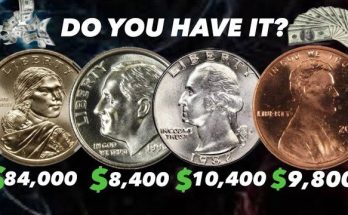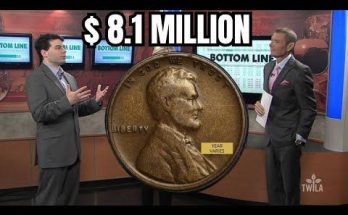War nickels were made out of Tombac, a combination of copper and zinc, because the nickel in nickels had to be reallocated for steel in war materials. They lasted only for two years in 1942 and 1943, a 1944 Tombac found is unique, but the copper was need so they changed composition again in 1944. Still these coins are common and 1943 is the most common with over 24 million minted.
The V (5 in Roman numbers) on the reverse was inspired by the “V” Churchill through up during the World War II and by the older U.S. 1883-1912 nickels that had V symbol. The torch is known as a vitory torch seen around the western world for many reason. The front has GEORGIVS VI D : G : REX ET IND : IMP : with a protrait of King George VI.
Secret code
Look on the reverse the border near the rim is a Morse code message, “We win when working willingly.”
This one was plated in gold but not by the Canadian government. Plating coins is considered damage by collectors since the surface of the coin is permanently altered.As for the silver, gold, or platinum used in coin plating they have little to no value. The reason is that it is usually low quality and also very thinly layered. As you see above the gold is so thin after a few years it begins flaking or scraping off. As far as I know there is no efficient way to salvage this gold.
Side by side you can see the difference but I prefer the way the original Tombac looks. Although the luster is gone a high grade Tombac coin looks more like the plated version except a bit less yellow.









